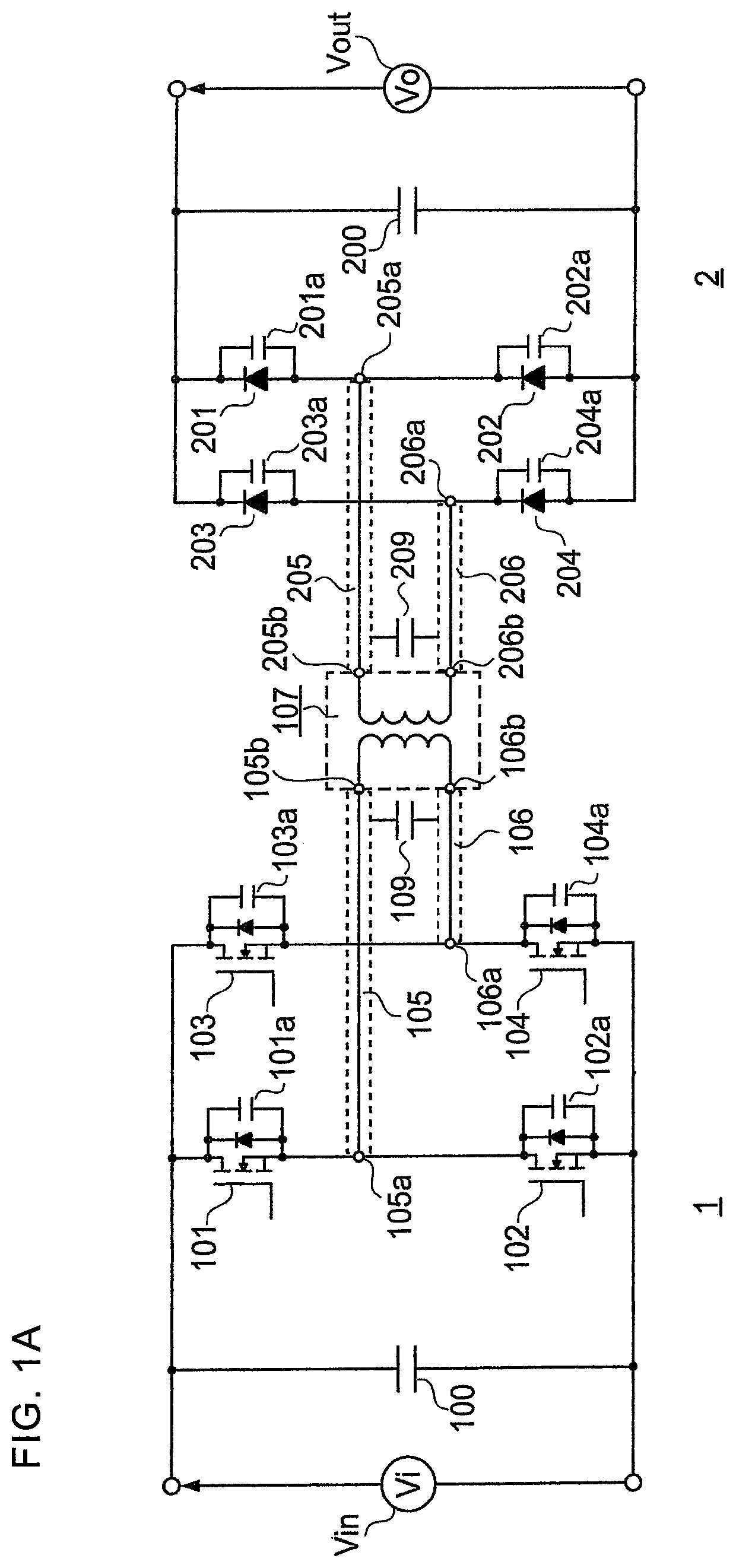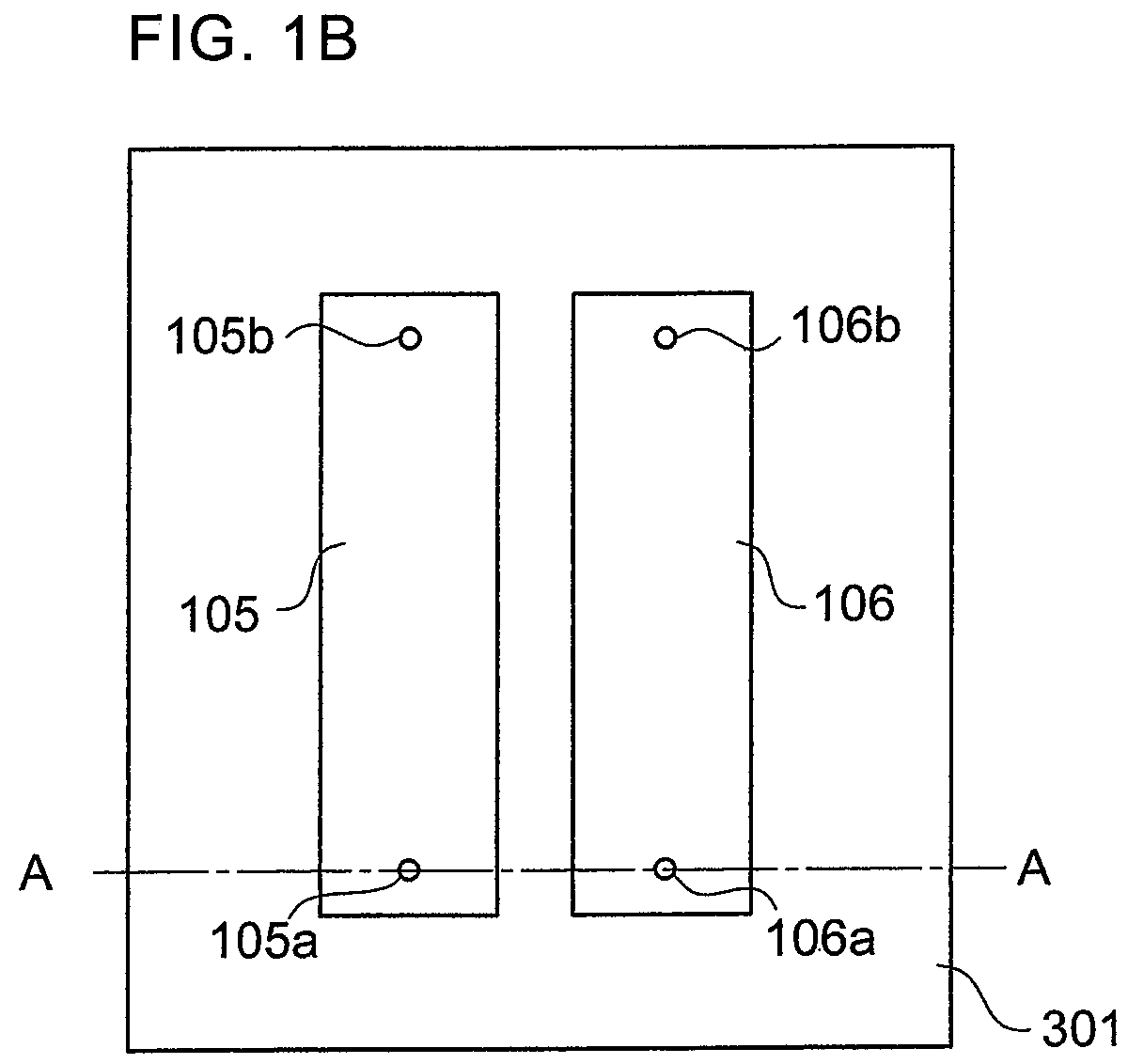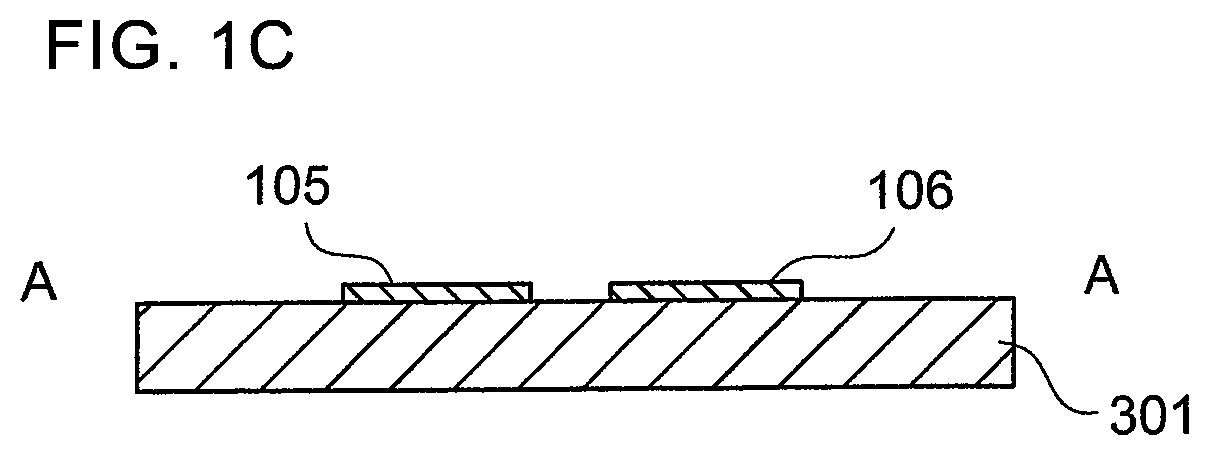Power conversion device
- Summary
- Abstract
- Description
- Claims
- Application Information
AI Technical Summary
Benefits of technology
Problems solved by technology
Method used
Image
Examples
first embodiment
[0053]FIG. 1A is a configuration diagram for illustrating a circuit configuration of a power conversion device according to a first embodiment of the present invention. Further, FIG. 1B is a plan view for illustrating configurations of a first conductor and a second conductor formed in the power conversion device according to the first embodiment of the present invention, and FIG. 1C is an A-A sectional view of FIG. 1B.
[0054]As illustrated in FIG. 1A, the power conversion device includes a primary circuit 1, a secondary circuit 2, and an isolation transformer 107 formed between the primary circuit 1 and the secondary circuit 2.
[0055]The primary circuit 1 includes an input capacitor 100, a first switching element 101, a second switching element 102, a third switching element 103, and a fourth switching element 104. The input capacitor 100 is connected in parallel to the subsequent stage of an input voltage Vin. Further, the first switching element 101 has a parasitic capacitance 101a...
second embodiment
[0084]The overall configuration of a power conversion device according to a second embodiment of the present invention is the same as the above-mentioned configuration of the first embodiment illustrated in FIG. 1A.
[0085]FIG. 4A to FIG. 4D are schematic configuration views for illustrating configurations of the first conductor 105 and the second conductor 106 formed in the power conversion device according to the second embodiment of the present invention. In the above-mentioned first embodiment, as illustrated in FIG. 1B and FIG. 1C, the first conductor 105 and the second conductor 106 are wired on one surface of the insulating substrate 301. In the second embodiment, as illustrated in FIG. 4A to FIG. 4D, the first conductor 105 and the second conductor 106 are wired on both surfaces of the insulating substrate 301.
[0086]Further, the first conductors 105 wired on both the surfaces of the insulating substrate 301 are electrically connected to each other via through holes 105t1 and 1...
third embodiment
[0098]The overall configuration of a power conversion device according to a third embodiment of the present invention is the same as the above-mentioned configuration of the first embodiment illustrated in FIG. 1A.
[0099]FIG. 5A to FIG. 5D are schematic configuration views for illustrating configurations of the first conductor 105 and the second conductor 106 formed in the power conversion device according to the third embodiment of the present invention. In the above-mentioned second embodiment, the insulating substrate 301 is formed of a single layer, and the first conductor 105 and the second conductor 106 are each wired in two layers. In contrast, in the third embodiment, the insulating substrate 301 is formed of two or more layers, and the first conductor 105 and the second conductor 106 are also each wired in two or more layers. That is, in the third embodiment, as illustrated in FIG. 5A to FIG. 5D, a plurality of insulating substrates 301 are laminated. Further, on the upper s...
PUM
 Login to View More
Login to View More Abstract
Description
Claims
Application Information
 Login to View More
Login to View More - R&D
- Intellectual Property
- Life Sciences
- Materials
- Tech Scout
- Unparalleled Data Quality
- Higher Quality Content
- 60% Fewer Hallucinations
Browse by: Latest US Patents, China's latest patents, Technical Efficacy Thesaurus, Application Domain, Technology Topic, Popular Technical Reports.
© 2025 PatSnap. All rights reserved.Legal|Privacy policy|Modern Slavery Act Transparency Statement|Sitemap|About US| Contact US: help@patsnap.com



